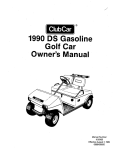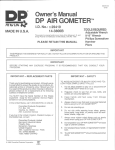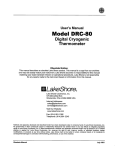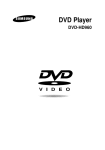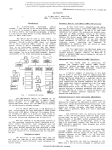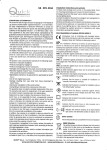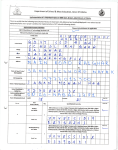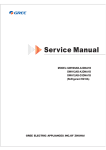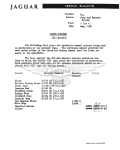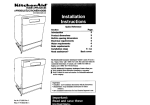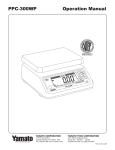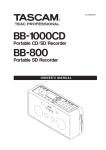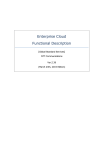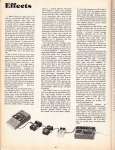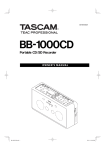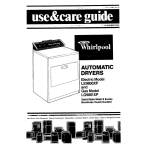Download unico air operation & installation manual
Transcript
OLII\APIA
SPLENDID
NUOVI SISTEMI USER FRIENDLY
IS,T.RUZiONiIFER
GB
.rlifilgTRUCTJO,!{,S
F
D
E
\
@)
-1.
i
I
6
/C\ OLIAAPIA
\.I,' SPLENDID
a\D-
t
4
UNlcoAlR
e.E}€e#4.4-.'z€z*'4€*R:'#ei.*4*F#-&.?€'-1.*.n..=5*3**"'-.=.#2*4:..=...'*€.@€d*#
\a
D5
D6
//
HHIH8fr
qG
-- T3
\T2
T7
.........-T6
TgTg-''
--T11
--
T10
1
GENERAL
LJ'UvLvaaa.''l^,i
---------
q--------------
.E
z1'
---------- z\)
------------- 26
.1 Editorial pictograms .1 .2 Safety pictograms
1.2 GENERAL INFORMATION ---------1.3 WARNING
.4 LlsT oF SUPPLIED COMPONENTS ---------.4.1 Storage---1.4.2 Receipt and unpacking:--------.5 UNIT ELEMENTS -------
1 .1
1
-------26
-------27
---------- 27
1
------ 28
----------- 28
------ 28
1
1
INSTALLATION
2
2.1 INSTALLATION MODES
2.1.1
2.2
2.3
Size and specifications of the room in which to install the air
CHOOSING THE POSITION OF THE UNIT
conditioner-------------
UNIT ASSEMBLY-------Warning
2.3.1
2.3.2 Drilling the wall
2.3.3 Preparing the condensate discharge -------------2.3.4 Assembly of the air ducts and external grids -----2.3.5 Preparrng the holes on the machine---2.3.6 Fitting the unit on the bracket----2.3.7 Electric hook-up-----
2.4
2.5
2.5.1
2.6
2.6.1
oo
ZJ
29
29
------ 29
---------- 29
----------------- 29
------- 30
------------------ 30
TOP/BOTTOM INSTALLATION CONFIGURATION
OPERATING TESTS AND TROUBLESHOOTING --------Evacuating condensate water during an emergency----------ROUTINE MAINTENANCE --------Cleaning the air filter---------
USE AND MAINTENANCE (user part)
3
WARNINGS
3.1
g.1.1 Description of the warning panel
g.2 MANAGING THE UNIT WITH THE REMOTE CONTROL3.2.1 Remote control
3.2.2 Fitting the batterres
3.3 REMOTE CONTROL3.3.1 Description of the remote control
3.3.2 Main switch-on and running management -----------3.3.3 Turning the unit ON/OFF
3.3.4 Well-being key (automatic operating) ----------3.3.5 Cooling
3.3.6 Dehumidification only--3.3.7 Ventilation only --------3.3.8 Heating (only models fitted with heating pump)-----3.3.9 Air flow direction control
3.3.'1 0 Checking fan speed -3.3.1'1 Night well-being key
3.3.12 Setting the operating programs
3.3.13 Setting the exact time ---------
------------------------
------------------------------------
31
31
31
--------'---------32
--'------32
---- 32
-------- 33
---------------- 33
DA
----- J+
---------- 34
--------- 34
----------------- 34
------------34
-------- 35
---------- 35
---------------- 35
---- 35
------ 35
----------- 35
------ 36
------- 36
----------------- 36
----- 36
--------- 36
---------- 36
------------ 37
--------------- 37
g.3.14 Setting the times of the 1st and 2nd the operating programs (PROGR' 1 and PROGR 2)---------------37
--------- 37
3.3.15 Starting and stopping the operating programs
--------37
3.3.'16 Resetting all remotelontroifunctions------------
3'3.lTManagingtheunitiftheremotecontrolisnotavailable------------------.-------.37
-.---.------- 38
3.4
3.5
ENERGY SAVING ADVICE---DIAGNOSIS OF THE PROBLEMS
Functional aspects not to be interpreted as
3.5.1
3.5.2 Troubleshooting---------3.5.3 Specifications--------------
problems
------- 38
--------------- 38
-- -- 38
----- 39
25
----: uNlco
AIR
GENERAL
1.'I
SYMBOLS
The pictograms shown in the next chapter provide the information necessary for correct use of the appliance in a rapid and unmistakable way.
'1.1.1
dt&:a
e7rer53
Editorialpictograms
Service
Refers to situations in which you should inform the SERVICE department in the company:
CUSTOMER TECHNICAL SERVICE.
[_F
tndex
Paragraphs marked with this symbol contain very important information and recommendations, particularly as regards
safety.
.
Failure to comply with them could result in:
danger of injury to the operators
loss of the warrantY
refusal of liability by the manufacturer.
nlL
I I
Raised hand
',!, _
1.1.2
A
A
A
1.2
Refers to actions that absolutely must not be performed
Safety pictograms
Danger of high voltage
Signals to the personnel that the operation described could cause electrocution if not performed according to the safety
rules.
Generic danger
-
Sig nals to the person nel that the operation described could cause physical injury if not performed accord ing to the safety
rules.
Danger from heat
-
Signals to the personnel that the operation described could cause burns if not performed according to the safety rules
GENERAL INFORMATION
First of all, we would like to thank you for choosing an air-conditioner produced by our company.
We are sure you will be happy with it because it represents the state of the art in home air conditioning technology.
This manual has been compiled with the aim of providing you with all the explanations necessary to manage perfectly your conditioning system.
Therefore, please read the manual carefully before using the equipment
By following the suggestions contained in this manual, the conditioner that you have purchased will operate without problems giving
you optimum room temperatures with minimum energy costs.
The manual is divided into 3 sections or chapters:
CHAP. 1 GENERAL INFORMATION
Aimed at the specialised installer and the end user.
It contains information, technical data and important warnings to heed before installing and using the conditioner.
CHAP. 2 INSTALLATION
Aimed exclusively at a specialised installer.
It contains all the information necessary for the positioning and mounting of the conditioner in the place where it will be installec
The installation of the conditioner by non-specialised personnel will invalidate the warranty conditions.
CHAP. 3 USE AND MAINTENANCE (user part)
Contains useful information for understanding the use and programming of the conditioner and the most common maintenanc:
interventions.
This is a legally reserved document and the reproduction or transmission to third parties without the explicit authorisation of OLIM'
PIA SPLENDID is absolutely forbidden.
The appliances could be subject to updating and therefore appear different from the designs coniained herein, although this does
not in any way invalidate the texts contained in the manual.
Read this manual carefully before performing any operation (installation, maintenance, use) and follow the instructions containe:
^
^^^L
^f
::
1
Ltrt,.i.Ftr
1\F. --
!ILT\D-D
\
^^+^-
THE MANUFACTURER IS NOT RESPONSIBLE FOR DAMAGES TO PERSONS OR PROPERTY CAUSED BY FAILURE TO
FOLLOW THE INSTRUCTIONS IN THIS MANUAL.
The manufacturer reserves the right to modify at any time its models without changing the fundamental characteristics described
in this manual.
The installation and maintenance of air-conditioners like this one may be hazardous as they contatn a cooling gas under pressure
as well as powered parts.
Therefore, the installation, first startup and subsequent maintenance should be carried out exclusively by authorized,
qualified personnel.
t
Failing to comply with the instructions contained in this manual, and using the unit with temperatures exceeding the permissible
temperature range will invalidate the warranty.
Routine maintenance of the filters and general external cleaning can be done by the user as these operations are not difficult
dangerous.
or
the
force
During the assembly and each maintenance operation, always pay attention to the warnings described in this manual and on
labels affixed inside the appliances, and respect anything suggested by common sense and those of ihe Safety Norms in
in the place of
installation.
A
A
A
A
A
A
\?f
A
m
1.3
Always wear gloves and protective goggles when carrying out interventions on the cooling part of the
;.;'' ,
(laundry
should components need replacing, always use oLlMPlA SPLENDID original spare parts.
IMPORTANT!
To avoid any risk of electric shock always remove the master plug from the mains before making any electrical connec-
tions or any other maintenance intervention on the appliances.
Make sure that all personnel responsible for transport and installation of the appliance are aware of these instructions.
IMPORTANT!
Do not allow R-410Ato escape into the atmosphere: R-410A is a fluorinated greenhouse gas, as cited in the Kyoto Protocol, with
a Potential Global Warming effect (GWP) = 2636
DISPOSAL
The symbol on the product or on the packaging indicates that the product must noi be considered as normal domestic refuse but
it must be taken to an appropriate disposal point for recycling electrical and electronic appliances.
Disposing of this product in the appropriate way avoids causing potentially negative consequences both for the environment and
for the health that could occur if the product is not disposed of correctly'
Further information about the recycling of this product can be obtained from your local town hall, your refuse collection service, or
in the store at which you bought the product.
This regulation is valid only in EU member states.
WARNING
The air-conditioner should be used for the exclusive purpose of producing hot or cool air (on demand) for the sole purpose of
obtaining a comfortable temperature in the room.
lmproper use of the equipment, which may cause injury/damage to persons, property or animals, relieves OLIMPIA SPLENDID
of anY liabilitY.
1.4
LIST OF SUPPLIED COMPONENTS
The supply includes the parts listed in the table below (fig. 1). Before beginning to assemble the unit, make sure all the
parts are within easY reach.
DEFGH-
A
B
C
:.: '
t',,,
.'..,..
appliance.
Conditioners MUST NEVER be installed in rooms where there is inflammable gas, explosive gas, a high level of humidity
rooms, greenhouses etc), or in rooms where there are other machines that generate a lot of heat.
rrir..':
Strip of adhesive isolating tape (n.2)
Air inlet and outlet external grid including chains and kit for installing the grids (n.2)
lnternal flanges (2)
Sheet for wall PiPes (n.2)
Wall anchoring Hooks
Use and maintenance booklets + warranty
Remote control
Paper temPlate to make holes
27
,.i,,4
I
1.4.1
ff.
Storage
store the packages in a closed room'
protected from atmospheric
agents and resting on pailets or
beams to isorate from the ground.
f,
DO
1.4.2
NOrovERruRN rHE
PACKAGE.
Receipt and unpacking
The products are packaged
by expert personner using suitabre packaging
materiar.
i'ip"'ie"t condition, no*uuui*" iusgest
that you perrorm the rorowins
""J
contrors or the quar*y
lffi::nffi"J:";[:,";to';'"
-
:iffHi:rln::nit;:i"*
irthe packase is damased. trarrirmative,
accept the soods with reserve,
rakins photosraphs
unpack and check the contents
against the packing list.
il"""-Jffi';:nn'ffi;",1r:*ir;,:hJJruti:,,uffi:?r;?*;i,ii"?#5;,i!l"J3
Send the same information
by fax
No compraints wit be accepteo
ii
the forwarder bv resisterec
t" oiffufpie seLEND|D.
r"J" rr*"ihan 3 days after the derivery of the goods.
lmportant note:
Keep the packaging at least
during the warranty period for
any possible delivery of the product
Dispose of the packaging in
to a service centre.
compriance *itr, tr.r" I"gr[tions
concerning ,.eruse!Lposat.
1.5
UNIT ELEMENTS (fis. 2)
l
The two units that make u1jh1
air_conditioner are packed separately
in cartons.
;::liiff"i,fl"1"oH;:0"*o
1)
2)
91
4)
l]
9]
7)
28
p"'
'ingr"
uniti
Air ouflet flap
Aspiration orill
Function and alarms display
console
Air fitters
Condensate discharge
Emergency condensate discharge
Power cable
lii)ro
ov t*o
"rino,L"Jo",ron.,
I
or roaded on a trorey, even pirins
up tc
INSTALLATION
2
2.1
INSTALLATION MODES
To obtarn the best results and optimum performance, follow the instructions for correct installation provided in this manual. Failure
to follow the instructions and apply the rules indicated may cause malfunction of the appliance and relieves the manufacturer,
OLIMPIA SPLENDID of any form of guarantee and liability for damages to persons, animals or property.
A
2.1.1
The electrical system must comply with the regulations and rating data in the technical sheet, with good grounding.
Size and specifications of the room in which to installthe air conditioner
Before installing the air conditioner, it is essential to make an accurate calculation of the heat load in summer (and cold load in
winter for models with heating pump) at the site of installation.
The more accurate this calculation is made the better the air conditioner will be able to do its job.
When executing the calculations, refer directly to the prevailing standards
For particularly important applications, we recommend contacting expert heating engineers.
The user should try to limit high heat loads as much as possible as follows: glass doors and windows exposed to many hours of
sunlight should be fitted on the inside with curtains or, even better, on the outside with coverings such as Venetian blinds, verandahs, refractive film, etc.). The air-conditioned room must remain closed as long as possible.
Halogen spotlights or other electrical equipment with high power consumption should not be used in the room (toasters, steam
irons, hot plates for cooking, etc.).
2.2
CHOOSING THE POSITION OF THE UNIT
The position for installing the unit, to obtain best performance and avoid breakdowns or hazards, must have the following requisites
(fis. 3):
The height of the unit's lower edge from the floor should be at least 100 mm if fixed to the wall in the lowest position.
lf fixed to the wall in the highest position, it should be at least 80 mm from the ceiling.
The wall on which the inside unit is installed must be sturdy and able to withstand its weight.
lt must be possible to leave room around the unit for any maintenance operations that may be necessary.
Nothing should be in the way of the air that needs to circulate both on the top air-intake (curtains, plants, furniture) and at the
front where the air exits. This could cause air swiris that would inhibit the working efficiency of the unit.
[F
The air conditioner must be installed on a wall that communicates with the outside.
CAUTION: after determining the best place for installation as described above, check for the absence of other structures
or systems (beams, piers, pipes, wires, etc.) at the points where the holes are to be drilled, which would prevent drilling
the holes required to install the unit.
Check again to make sure there are no obstacles to air circulation through the holes to be drilled due to plants and their
leaves, slats or panelling, blinds, gratings or grids too dense, etc.).
I €
wARNINGS (fis.4):
-
it should not be placed under curtains;
do not spray water or other liquids of any kind directly on the unit;
it should not be installed in a position where the air flow can directly strike people in the whereabouts.
never force the opening of the airflow flap;
do not place bottles, cans, clothing, flowers oranyotherobjectthat may damagethe internalorgans on the airaspiration
grill or anything that may even partially obstruct the grill itself;
it should not be directly over another appliance (television set, radio, refrigerator, etc.), or over a source of heat.
2.3
UNIT ASSEMBLY
2.3.1
Warning
The maximum length allowed for pipes is 1 m. The pipes must be smooth on the inside. Pipes cannot be curved or bent.
It is necessary to use the grilles provided, or grilles which keep the same features.
2.3.2
Drilling the wall
lnstall the unit by drilling two holes diameter either 162 mm in the wall as indicated in the drilling template.The UNICO unit may
be installed in lieu of a UNICO unit without changing the position of the existing holes, with the exception of the small hole for
condensate drainage, ln this case, in order not to penalize performance, remove the insulating material from the air outlet pipe.
Drill the wall using the proper tools to facilitate your job and prevent excess damage or disturbance to your client. The best tools
for drilling large holes in walls are special drills called core borers with very high twisting torque and adjustable rotating speed
depending on the diameter of the hole to be drilled.
29
--'*- uNlco AIR
I
w
i
I
To prevent the creation of large amounts of dust and rubble due to drilling, the core borer can be fitted with a vacuum
system
applied by means of suction cups to the drilling zone. Our Service Department can give you all necessary information to enable
you to find these devices.
To drill the holes, proceed as follows:
Fasten the drilling template to the wall leaving the necessary space from the ceiling, floor and side walls as shown on the
template
that may be fixed using adhesive tape.
Use a small drill or punch to mark, with extreme care, the exact centre of each of the holes to be drilled.
Using a core boring head measuring at least 162 mm to drill the two holes for entry and exit of the air.
wARNING: drilltheforegoing holes tilted slightly downwards to preventwaterfrom being fed backthrough the ducts (fig.5).
n:F-
Most of the removed material is expelled outwards, therefore make sure that it does not hit any person or object when it
falls out.
ln order to avoid as much as possible outer plaster breaking, it is necessary to proceed carefullywith the last part
of hole execution,
decreasing pressure on core borers.
Next, drill the holes for anchoring the fastening brackets to the wall using as a first option the 4 holes on the ends
of the bracket
as shown on the drilling template.
lf the wall is not very solid, it is advisable to use some extra anchor bolts.
As you can see, the bracket can be fastened in a number of different ways and positions. The majority of
the weight of the appliance
is to the right side so ensure that fixing is more secure on this side.The anchor bolts provided require holes
with a diameter of 10 mm.
ln any case, the wall should be inspected carefully to determine the best possible anchorage and type of bolts suitable
for particular situations.
WARNING: the manufacturer will not be held liable for any underestimates made in the structural consistency of the
anchor prepared by the installer.
Therefore, pay utmost attention to the foregoing operation that could cause serious injury/damage to people/property
if carried
out incorrectly.
When installing models equipped with heating pump, if no condensate discharge was built into the wall (see paragraph
2.3.2),
order to dratn the condensate it will be necessary to drill a hole through the wall in the position shown on the
template"
in
Preparing the condensate discharge
2.3.3
As far as machines equipped with a heating pump are concerned, connect the unit to the condensate discharge pipe (supplied)
by
coupling it with the specific vent (fig. 6 ref. A) that is on the back of the machine (remove cap B). When the max
level is reached,
a solenoid valve ensures the condensate will flow out from the internal tray. For cold-only machines, connect the
condensate
discharge pipe if you intend running the unit at low outdoor temperatures (lower than 23.c).
Since condensate drains by gravity, there must be a minimum slope of at least 3% at every point of the discharge
line. Use a rigid
or flexible tube having an inside diameter of at least 16 mm.
lf the line empties into a sewerage system, install a siphon before the point in which the pipe reaches the
main discharge, at least
300 mm below the inlet from the unit (fig. 6).
lf the drainpipe drains into a vessel (tank or other container), this container
remain immersed in the water (see fig. 7).
should not be sealed and the drainpipe should not
The hole through which the condensate pipe passes should always slope towards the outside (see fig. B).
The exact position in which to place the pipe inlet, as compared to the machine, is shown on the drilling
template.
CAUTIoN: make sure, in this case, that the water expelled outward does not damage or disturb persons or property.
During the winter this type of drainage may cause sheets of ice to form.
When the condensate drainage is fitted, pay much attention not to compress the rubber hose.
2.3.4
Assembly of the air ducts and external grids
After having drilled the holes, insert the plastic sheet supplied with the conditioner into them.
The length of the sheets must be 6s mm less than the thickness of the wall.
Roll the sheet and insert it into the hole (fig. 9), paying attention to the splicing line (fig. 9 ref. A), which
must always face
upwards.
a
Use an ordinary cutter for the foregoing operation (fig e).
To position the external grids, proceed as follows:
Apply the seal (fig. 10 ref. B) to the wail ftange (fig. 10 ref. A), ensuring it lines up with the outer edge
of the flange as indicate:
-
-
in the figure.
Fix the two flanges using 2 pegs having a diameter of 6 and check that the two fixing holes are horizontal.
Fit the small eyelet of the spring, with the long stem, on the cap pin (on both components) (fig.
11 ).
lnsertthetwocaps(withspring),onthefrontpartof
30
&
R"JI
I
OLIIWPIA
SPLENDID
theexternal grid,onitstwohousings,pullinguntil itclicks(fig. 12) anc
I
w
couple the two chains to the large eyelet of the spring.
Using one hand, grip the two chains connected to the grid.
Bend the external grids back, gripping them with your free hand where they bend, and insert your fingers inside the single
fins (fig. 13).
lnsert your arm into the pipe until the grid protrudes completely outwards.
Reopen the grid, being careful to keep yourfingers inside the fins.
Turn the grid until the fins are fully horizontal and tilted downwards.
Pull the chain, tensioning the spring, and couple the chain ring to the pin of the inner flange through which the pipes pass (fig.
14)
Use hand shears to cut off any excess chain links.
IF
2.3.5
WARNING: use exclusively the supplied grids, or grids with like characteristics.
Preparing the holes on the machine
The unit was built to be paired with 162-mm.
2.3.6
Fitting the unit on the bracket
After having checked that the fixing bracket is properly anchored to the wall and that the suitable preparatory work - if required has been carried out for the electrical connections and the condensate drainage, the air-conditioner can be fixed to the wall. Lift it
by holding it from the sides of the lower base (see fig. 15).
To facilitate the operation of fastening it to the bracket, tilt it slightly toward you.
To make the electrical connection and fasten the drainpipe, place a wedge between the air conditioner and the wall (see fig. 15).
When you have finished, inspect carefully to make sure there are no fissures at the back of the air conditioner (the insulating gasket
must fit firmly against the wall) particularly in the zone where air enters and leaves the machine.
2.3.7
Electric hook-up
The appliance is fitted with a power cord with plug (Y{ype connection). lf the socket is in proximity to the appliance, simply plug it in.
A
Before connecting the conditioner, ensure that:
-
[F
[F
A
2.4
The power supply voltage and frequency values comply with those indicated on the data plate of the appliance.
The power supply line is fitted with an efficient earth connection that is appropriately sized for the maximum absorption
of the conditioner (minimum cross-section of the cable must be 1.5 mm'z)"
The appliance is powered exclusively through a socket that is compatible with the plug supplied.
WARNING: Any'replacement of the power cable must be carried out solely by Olimpia Splendid technical support or by
similarly qualified personnel.
WARNING: On the power supply line of the appliance there must be an adequate omnipolar disconnection device that
complies with the national installation regulations. lt is, however, necessary to check that the electrical power supply is
equipped with efficient earthing and with adequate protections against overloading and/or short circuits (a type 10 AT
delayed fuse or other devices with equivalent functions are recommended).
TOP/BOTTOM INSTALLATION CONFIGURATION
This unit may be installed either at the bottom of the wall (adjacent to the floor) or at the top (adjacent to the ceiling). The air jet
can be modified to optimize air distribution and room well-being by changing the position of the air outlet flap.
31
2.5
OPERATING TESTS AND ANOMALY DIAGNOSIS
The conditioner is able to perform a brief auto-diagnosis cycle to check that the internal components are operating normally and
during which it is possible to perform the configuration of the electronic control based on whether installation of the appliance was
performed to the upper part (to the ceiling) or lower part (to the ground) of the wall.
To activate the self-diagnosis function, proceed as follows:
power the appliance by connecting it to a socket or by acting on the master switch of the system;
ensure that the machine is on stand-by (no LED should be lit on the console);
Press the micro-key positioned underneath the hole to the left side of the console (fig. '19 ref. H) with a pointy object for at
least 10 seconds. The acoustic signal emitted indicates that the self-diagnosis function has been activated.
-
At this point the current configuration of the machine will be displayed for a few moments as indicated below:
LED A (red) on: appliance fitted with heat pump function;
LED B (green) on: installation to the lower part of the wall (to the ground) (factory installation);
LED C (orange) on: installation to the upper part of the wall (to the ceiling);
LED D (green) on: reset settings function after an active black-out (factory setting).
Then, all of the LEDs on the console will start flashing simultaneously for 10 seconds. During this phase, through the micro key
(fig. 19 ref. H), it is possible to modify the previously displayed setting related to the type of appliance installation.
NB: Configuration of the electronic control for installation to the upper part of the wall determines an automatic correction of the
room temperature detected of 3"C.
At this point the self-diagnostic function activates the appliance in heating mode (if fitted with the heat pump function) for approx.2
minutes and then in cooling mode for another 2 minutes.
It is possible to terminate the function prematurely simply by switching the appliance off using the remote control.
Should the conditioner block and signal an error (as indicated in the following table), specify the LEDs that are flashing to the service
centre in order to facilitate the intervention (fig. 19).
DESCRIPTION
LED D
LED C
LED B
LED A
GREEN
YELLOW
GREEN
RED
OFF
ONr:;:
OFF
ON
Overtemperature of internal exchanger (HTl)
Overtemperature of external exchanger (HTE)
OFF
OFF
ON:,tj;l
External temperature probe fault (short circuit) (TFS7)
External temperature probe fault (open circuit) (TFSB)
OFF
ON'.i*
OFF
OFF
OFF
OFF
OFF
ON
lnternal fan malfunction (SV)
OFF
ON,
OFF
nsufficient exchanger temperature (CF/RL)
OFF
ON
ON .,
OFF
ONI
oN.:*;,
I
Maximum level of condensate water (OF)
lnvalid EEprom parameters (CKS)
!.:;:
OFF
OFF
ON:.:,i!,j-,
OFF
OFF
ON
Room temperature probe fault (short circuit) (TFS1)ON
Room temperature probe fault (open circuit) (TFS2)ON
OFF
oN'
ON
ON
ONi
OFF
External exchanger temperature probe fault (short circuit) (TFSS)
External exchanger temperature probe fault (open circuit) (TFS6)
ON.r
ONj;,:i
ON':t-r.
ON
ON;
oN ,,
.
:
OFF
ON:
oN,':::,
Internal exchanger temperature probe fault (short circuit) (TFS3)
lnternal exchanger temperature probe fault (open circuit) (TFS4)
-ti..:l
OFF
.:,-ri
:l
OFF
ON
OFF
ON
flashing
WARNINGS SIGNALLED DURING NORMAL OPERATION SHOULD NOT BE INTERPRETED AS ANOMALIES.
LED A: indicates the filter may need cleaning
After this operation the LED must be switched off manually as indicated in section 2.6.1
LED B steady light: high battery temperature signal.
LED A + LED C flashing: continuous pump operation.
2.5.',|
Evacuating condensate water during an emergency
lf there should be a malfunction in the condensation water drain system, the air conditioner stops working and signals, with flashir-9
orange, green and red lights (the second and third LEDs from the left), the alarm status.
To enable the air conditioner to work temporarily until the service personnel arrive, you can drain the water out by following these
simple instructions:
remove the cap after having placed
a good-sized container underneath it (at least S-liter capacity) to
the water (see fig. 20)
after having cleared the fault, the service personnel will close the evacuation pipe.
32
gLISBJA
SPLENDID
collec:
i
i
I
i
2-6
ROUTINE MAINTENANCE
The air conditioner that you have purchased has been designed to reduce routine maintenance operations to a minimum. These
operations involve solely the cleaning operations outlined below:
- Cleaning or washing of the ambient air filter every 2 weeks or every time the relative red LED lights up (this can be done by the
-
user, see user manual).
Cleaning of the condensing battery and cleaning of the condensate management system. These operations must be carried
out by skilled technicians on a regular basis that will depend on the place of installation and intensity of use. Depending on the
quantity of dirt, the unit can be cleaned dry (by using a battery compressor and bowl and cleaning the fins with a soft brush
taking care not to deform them) or more thoroughly using dedicated detergents.
Before you leave the site of installation you should gather up all packing material and use a damp cloth to remove any traces of
dust that may have deposited on the machine during assembly (fig. 21).
These operations, though certainly not essential, have a beneficial effect as they enhance the professional image of the installer
in the eyes of the client.
To prevent unnecessary calls by the user, before you leave the site of installation it is also a good idea to:
Explain the contents of the lnstruction Manual to the user.
2.6.1
n
^/l\
/-\
--/L\
Show the user how to clean the filter.
Cleaning the air filter
oPERATIONTOBEPERFORMEDWHENTHEMACHINEISSWTTCHEDOFFANDTHEPOWERSUppLyTSDTSCONNECTED.
4l
To ensure effective internal air filtration and satisfactory operation of your air conditioner, the air filter has to be cleaned periodically.
The air filter is at the top of the unit.
Removing the filter:
unhook and manually remove the air intake filter acting as indicated in fig.22
remove the two supplementary filters from the filter unit
-
wash and dry all the filters
refit the filter unit
To deactivate LED A (if on), after having powered and started the appliance, press the micro key positioned on the signal console
(fig. 19 ref. H) with a pointy object for a brief instant. By doing so, the signal related to the filter cleaning requirement is reset.
33
rco AtR
Dehumidification only
3.3.6
When used in this mode, the air conditioner eliminates the humidity in the room. This function
can be extremely useful between
seasons, particularly on rainy days when the temperature is not uncomfortable but
the excess humidity feels unpleasant.
ln this mode, both room temperature and fan speed settings are ignored, which correspond
to mjnimum.
As such, no temperature and fan speed indications are displayed.
Activate this mode by pressing button T4 (Run mode selector) until the droplet symbol D4
and automatic ventilation symbol Dl
are displayed.
ln this operating mode it is normal for the air conditioner to function intermittenfly.
Ventilation only
3.3.7
When used in this mode the air conditioner does not perform any action with regard
to temperature and air humidity in the room.
Activate this mode by pressing button T4 (Run mode selector) until the fan symLol
D1 is displayed.
At this stage you can select the fan speed (see paragraph 3.3.10).
3.3.8
Heating (only models fitted with heating pump)
When used in this mode the air conditioner heats the room. This function is only available
on models with a heating pump (Hp).
Activate this mode by pressing button T4 (Run mode selector)until the sun symbol
D2 is displayed.
ln this run mode, the required temperature and fan speed can be set. After three
minutes (maximum time) the compressor should
start and the air conditioner starts heating the room. The start of the compressor
can be checked through the lighting of the relevant
green LED located on the console.
NoTE: the air conditioner has to defrost its battery periodically. during this operation
the air conditioner does not heat
the room, though its internal parts remain on except for the room air fan. when
the outdoor temperature is very low, there
may be a slight delay for passage from the minimum to the medium or maximum
speed from when the command is sent
to the machine with the remote control.
Like delays might occur on activating the swinging function of the mobile
baffle.
After having turned off the unit, the internal fanruns 60 seconds more. Then it
stops and both air flaps close.
Air flow direction control
3.3.9
.f
dirir
1\
\'l
3.3.10
By pressing button Tg it is possible to activate/deactivate the continuous
swing of the mobile air ouflet baffle. when the continual
swing is activated, one further press of button Tg will block the baffle so
that the desired vertical direction of the air flow is obtained.
IMPORTANT Movement of the mobire baffre must never be forced manuaily.
Checking fan speed
Fan speed is checked by button T5. Pressing this button several times
will change the speed in this orcler: Low, Medium, High
and Automatic.
The higher the speed setting, the greater the output of the air conditioner
but also the louder its operation. By setting the Automatic
mode' the onboard microprocessor adjusts the automatic speed. The higher
the difference between the room temperature detected
and the temperature set, the higher the speed.
As the room temperature nears the setting, fan speed is reduced
automaticaily.
ln dehumidification mode, it is not possible to control the speed as
the appliance can only operate exclusively at low speed.
3.3.11
Night weil-being key
Press the T3 button (night weil-being) to obtain severar resurts, specificaily:
Gradual increase of the set cooling temperature.
Graduar decrease of the temperature set for heating (onry Hp moders),
Decrease of the unit,s noise level.
Savings on nighltime consumption of electricity.
-
ln order to activate the Nrght well'being key press button T3 press after
having selected the required operating mode
through button T4 and having set the required temperature through button
T7.
ldeally, you shourd start night weil-being mode operation just beflre you
fail asreep.
ln cooling, the set temperature is maintained for one hour after activating
the night-time comfort button. During the next
two hours
the setting increases gradually, whilst the running of the fan is set to loi,
speed. After the second hour, the temperature and far
speed settings do not change any longer.
ln heating mode, the set temperature is held for one hour after starting
Night well-being mode operation.
During the next two hours the setting decreases gradually, whilst
js
the *nning of the
fan
After the second hour, the temperature and fan speed settings
do not change any ronger.
36
€a? OLIAAPIA
SPiEr.rDrD
%
set to low speed.
Ihe'night well-being'key is not available when the unit operates in dehumidification and ventilation mode.
fhe nightwell-being mode button may be disabled
at anytime (ideally when you wake up in the morning)by pressing button T3 again.
At this stage the temperature and fan speed settings made prior to starting Night well-being mode operation go back into effect.
3.3.12 Setting the operating programs
The air conditioner logic provides the user with a choice of two operating programs that can be set to start and stop at programmed
times, for example you might want the air conditioner to start shortly before you return home so that it is cool when you get there.
To use these functions it is first necessary to set the exact time on the remote control and then set the time for the programs to start.
3.3,13
Setting the exact time
Proceed as follows to set the exact time:
Press button f6 (Time and Program Setting), as many times as necessary to display the hour indication H D10.
Press the toggle button T7 to increase or decrease the displayed hour until it matches the exact time.
Press button T6 again to display the minutes indication M D10.
Press the toggle button T7 to increase or decrease the displayed minutes until it shows the exact time in minutes.
a)
b)
c)
d)
3.3.14
Setting the times of the 1st and 2nd the operating programs (PROGR. 1 and PROGR. 2)
To set the times for starting and stopping the two air conditioner programs, proceed as follows:
a)
b)
c)
d)
e)
f)
s)
h)
i)
3.3.15
Press button f 6 ffime and Program Setting),as many times as necessary to display the indication [1 llme to start the 1st
program).
Press the toggle button T7 to increase or decrease the display of the time when you want program 1 to start.
Every time you press one end of the toggle button the time increases or decreases by 30 minutes.
Press button f6 fime and Program Setting) once again to display the indication ItE (fime to stop the 1st program).
Press the toggle button T7 to increase or decrease the indication of the time when you want program 1 to stop. Every time
you press one end of the toggle button the time increases or decreases by 30 minutesPress button fG [ime and Program Setting) once again to display the indication [2 gime to start the 2nd program).
Press the toggle button T7 to increase or decrease the display of the time when you want program 2 to start.
Every time you press one end of the toggle button the time setting increases or decreases by 30 minutes.
to stop the 2nd program).
Press button f6 [ime and Program Setting) once again to display the indication [zE
Press the toggle button T7 to increase or decrease the indication of the time when you want program 2 to stop. Every time
you press one end of the toggle button the time increases or decreases by 30 minutes.
To return to the routine operating mode just press the button T6 as many times as necessary to clear the relevant indications
from the display.
fir"
Starting and stopping the operating programs
After having made the settings for the operating programs, they can be used or not, as needed.
Either or both of the programs can be used.
ln particular, each time you press the button f 11 Qrogram activation), the situation changes as follows:
Use of Program no. 1 only.
Use of Program no.2 only.
Use of Programs 1 and 2.
Disuse of both programs..
3.3.16
Resetting all remote controlfunctions
Press the button T'10 to reset all the remote control settings.
By doing so all of the settings of the timer are cancelled and the remote control restores all of the default settings.
Furthermore, by pressing button T10, all of the symbols indicated infig.24 will appearon the display, thus making it possible to
check the integrity of the display itself.
3.3.17
Managing the unit if the remote control is not available
Should the remote control be lost, the batteries flat or if it is faulty, the appliance may be operated only in automatic mode by
pressing the micro switch positioned underneath the hole located on the console by means of a pointy object.
To switch the air-conditioner off, press the microswitch again.
To restore routing operations in the remote control, you need only issue any command once the remote control is available again.
JI
UNICO AIR
















